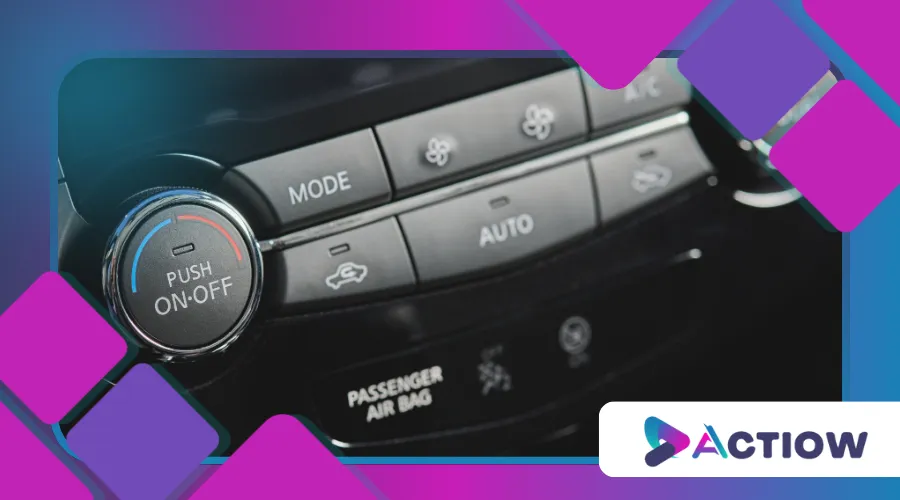Stability Control Systems: How They Improve Safety

Anúncios
Stability control systems have become a cornerstone of modern vehicle safety, seamlessly blending technology with human instinct to keep drivers in command.
These sophisticated setups, often referred to as electronic stability control (ESC), act like an invisible co-pilot, intervening when a vehicle threatens to skid or lose traction.
Since their widespread adoption in the early 2000s, they’ve redefined how cars handle in critical situations, slashing the risk of accidents caused by loss of control.
Anúncios
This article dives into how these systems work, why they’re indispensable, and what makes them a game-changer for road safety.
As technology continues to advance, we can expect to see even more innovations in stability control systems, further enhancing vehicle safety and driver confidence.
The Mechanics Behind the Magic
Imagine driving on a rain-slicked curve when your car starts to slide.
Your heart races, but before you can overreact, stability control systems kick in, subtly adjusting throttle and braking to guide you back on track.
This isn’t sci-fi—it’s a symphony of sensors, actuators, and algorithms.
Wheel-speed sensors detect slippage, yaw sensors monitor the car’s rotation, and a central computer compares your steering input to the vehicle’s actual path.
If there’s a mismatch, the system selectively brakes individual wheels or cuts engine power to prevent a spinout.
The beauty lies in its precision.
Unlike a human, who might panic and overcorrect, ESC operates in milliseconds, making calculated adjustments.
For instance, if your SUV understeers (plows forward instead of turning), the system might brake the inner rear wheel to tighten the turn.
If it oversteers (the rear swings out), it could brake the outer front wheel to stabilize.
This dynamic intervention is why the National Highway Traffic Safety Administration (NHTSA) credits ESC with reducing single-vehicle crashes by 35% for passenger cars and 67% for SUVs.
Furthermore, as vehicles become more advanced, the integration of stability control systems with other safety features will likely enhance overall driving safety.
| Component | Function |
|---|---|
| Wheel-Speed Sensors | Detect differences in wheel rotation to identify slippage. |
| Yaw Sensor | Measures the vehicle’s rotation around its vertical axis. |
| Steering Angle Sensor | Tracks driver’s intended direction. |
| Electronic Control Unit | Processes data and commands braking or throttle adjustments. |
A Lifesaver in Real-World Scenarios
Consider Sarah, a mother of two, driving her minivan on an icy Michigan highway.
A sudden lane change by another driver forces her to swerve.
Without stability control systems, her van might fishtail, risking a rollover.
Instead, ESC detects the skid, applies targeted braking, and stabilizes the vehicle in seconds, letting Sarah regain control.
This isn’t hypothetical—real-world data backs it up.
A 2023 study by the Insurance Institute for Highway Safety (IIHS) found that vehicles equipped with ESC had 41% fewer fatal single-vehicle crashes than those without.
Now picture Javier, a delivery driver in Arizona, navigating a gravel road during a monsoon.
His cargo van hits a patch of loose dirt, and the rear starts to slide.
Stability control systems intervene, reducing engine power and braking the appropriate wheels to keep the van on course.
These examples highlight ESC’s versatility, from icy highways to off-road challenges, proving its value across diverse conditions.
This adaptability is crucial, as it provides drivers with confidence in unpredictable environments, ensuring safer journeys.
Why does this matter? Because no driver is immune to surprises.
Black ice, sharp curves, or sudden obstacles don’t discriminate.
ESC doesn’t just react—it anticipates, giving drivers a safety net when split-second decisions aren’t enough.
+ Wireless Charging Technology for Electric Cars
Beyond the Basics: Advanced Features
Modern stability control systems have evolved far beyond their original scope.
Today’s setups integrate with other technologies, like adaptive cruise control and lane-keeping assist, creating a holistic safety ecosystem.
For instance, some systems now account for trailer sway, a common issue for drivers towing boats or campers.
When sensors detect oscillations, ESC applies asymmetric braking to dampen the sway, preventing jackknifing.
Another leap is terrain-specific ESC, found in off-road vehicles like the Jeep Wrangler or Toyota Land Cruiser.
These systems adjust intervention thresholds based on surfaces like sand, mud, or rock, allowing controlled slippage for traction while preventing spins.
This adaptability showcases how ESC balances safety with performance, catering to both daily commuters and adventure seekers.
As technology progresses, we can anticipate even more sophisticated features that enhance the driving experience and ensure safety.

| ESC Feature | Benefit |
|---|---|
| Trailer Sway Control | Reduces trailer oscillations for safer towing. |
| Terrain-Specific ESC | Optimizes stability for off-road conditions like sand or mud. |
| Roll Stability Control | Detects potential rollovers and applies brakes to prevent them. |
| Integrated ADAS | Works with lane-keeping and collision avoidance for comprehensive safety. |
++ Active Safety Systems: Technologies That Prevent Accidents
The Human Factor: Why ESC Shines
Driving is as much about psychology as it is about mechanics.
Humans are fallible—distraction, fatigue, or overconfidence can lead to errors.
Stability control systems act like a guardian angel, compensating for those lapses without judgment.
Think of ESC as a seasoned dance partner, stepping in to guide you when you miss a beat, ensuring the performance (your drive) stays smooth.
This analogy isn’t just poetic—it’s practical.
ESC doesn’t override the driver but enhances their input, preserving the joy of driving while minimizing risk.
Unlike older safety features like airbags, which activate post-collision, ESC is proactive, stopping accidents before they happen.
That’s why it’s mandatory in the U.S., Canada, and the EU for all new vehicles since 2012.
But here’s a question to ponder: If technology can save lives so effectively, why do some drivers still resist embracing it?
Perhaps it’s the fear of ceding control.
Yet ESC doesn’t dominate—it empowers, letting drivers push their vehicles confidently, knowing there’s a backup.
Understanding the psychological benefits of ESC can encourage more drivers to embrace this life-saving technology.
Challenges and Misconceptions
No technology is flawless, and stability control systems face scrutiny.
Some enthusiasts argue ESC dulls the driving experience, particularly in performance cars.
Manufacturers have responded with tunable systems, like those in the Ford Mustang or BMW M series, where drivers can adjust or disable ESC for track use.
However, this comes with a caveat: disabling ESC on public roads increases risk, as even skilled drivers can’t match the system’s reaction speed.
Another challenge is overreliance.
ESC isn’t a cure-all—it can’t defy physics.
On a flooded road or at extreme speeds, no system can fully compensate for poor conditions or reckless driving.
Educating drivers about ESC’s limits is crucial to maximizing its benefits.
It’s a tool, not a miracle.
Cost is another consideration, especially in developing markets where ESC isn’t yet mandatory.
Retrofitting older vehicles is often impractical, leaving budget-conscious buyers vulnerable.
Still, as production scales and technology advances, ESC costs are dropping, making it more accessible.
For more information on the challenges of vehicle safety technologies, you can visit Consumer Reports.

The Future of Stability Control
The horizon for stability control systems is bright, fueled by artificial intelligence and connectivity.
Next-generation ESC could leverage vehicle-to-vehicle (V2V) communication, where cars share data about road conditions in real time.
Imagine your sedan receiving a warning about black ice from a truck ahead, prompting ESC to preemptively adjust for traction.
AI-driven ESC could also learn driver habits, tailoring interventions to individual styles.
For instance, a cautious driver might get earlier, gentler corrections, while a spirited driver enjoys more leeway before the system steps in.
These advancements promise not just safety but personalization, blending technology with the human touch.
Electrification is another frontier.
Electric vehicles (EVs), with their instant torque and low centers of gravity, handle differently than gas-powered cars.
Stability control systems in EVs like the Tesla Model Y or Rivian R1T are fine-tuned to manage regenerative braking and torque vectoring, enhancing both safety and efficiency.
As EVs dominate, ESC will evolve to match their unique dynamics.
The future of stability control systems holds great promise, ensuring that as vehicles evolve, safety remains a top priority.
The Bigger Picture: A Safer Tomorrow
The impact of stability control systems transcends individual drivers—it’s reshaping our roads.
By reducing crashes, ESC saves lives, lowers insurance costs, and eases the burden on emergency services.
It’s a ripple effect: fewer accidents mean less traffic congestion, reduced healthcare costs, and a safer society.
The IIHS estimates that universal ESC adoption could prevent 10,000 fatal crashes annually in the U.S. alone.
Yet, the story isn’t just about numbers.
It’s about peace of mind.
Knowing your car has your back lets you focus on the journey, not the risks.
Whether you’re a parent shuttling kids, a professional on a deadline, or an enthusiast carving corners, ESC ensures you arrive safely.
In the end, stability control systems aren’t just technology—they’re a promise.
A promise that innovation can outsmart chaos, that engineering can protect, and that every drive can be a safe one.
As we look to a future of smarter, connected, and electrified vehicles, ESC remains a foundation, proving that safety and progress go hand in hand.
Ultimately, the ongoing development and integration of stability control systems will play a crucial role in shaping the future of automotive safety.
